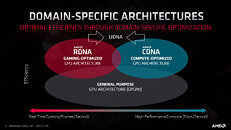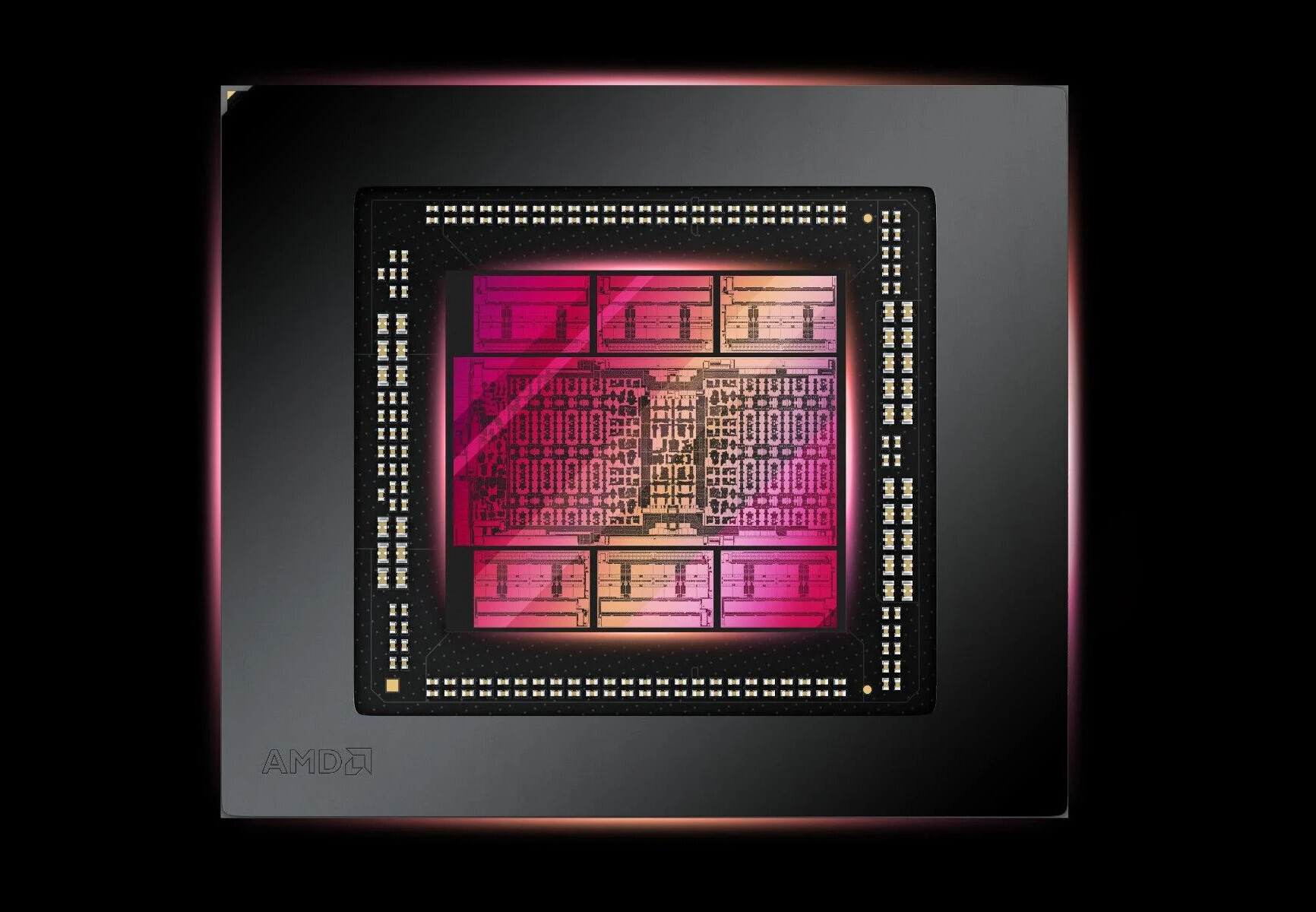- Joined
- Aug 19, 2017
- Messages
- 2,941 (1.05/day)
While the current generation of AMD graphics cards employs RDNA 3 at its core, and the upcoming RX 8000 series will feature RDNA 4, the latest leaks suggest RDNA 5 is not in development. Instead, UDNA will succeed RDNA 4, simplifying AMD's GPU roadmap. A credible source on the Chiphell forums, zhangzhonghao, reports that the UDNA-based RX 9000 series and Instinct MI400 AI accelerator will incorporate the same advanced Arithmetic Logic Unit (ALU) designs in both products, reminiscent of AMD's earlier GCN architectures before the CDNA and RDNA split. Sony's next-generation PlayStation 6 is also rumored to adopt UDNA technology. The PS5 and PS5 Pro currently utilize RDNA 2, while the Pro variant integrates elements of RDNA 4 for enhanced ray tracing. The PS6's CPU configuration remains unclear, but speculation revolves around Zen 4 or Zen 5 architectures.
The first UDNA gaming GPUs are expected to enter production by Q2 2026. Interestingly, AMD's RDNA 4 GPUs are anticipated to focus on entry-level to mid-range markets, potentially leaving high-end offerings until the UDNA generation. This strategic pause may allow AMD to refine AI-accelerated technologies like FidelityFX Super Resolution (FSR) 4, aiming to compete with NVIDIA's DLSS. This unification is inspired by NVIDIA's CUDA ecosystem, which supports cross-platform compatibility from laptops to high-performance servers. As AMD sees it, the decision addresses the challenges posed by maintaining separate architectures, which complicate memory subsystem optimizations and hinder forward and backward compatibility. Putting developer resources into RDNA 5 is not economically or strategically wise, given that UDNA is about to take over. Additionally, the company is enabling ROCm software support across all products ranging from consumer Radeon to enterprise Instinct MI. Accelerating software for one platform will translate to the entire product stack.

View at TechPowerUp Main Site | Source
The first UDNA gaming GPUs are expected to enter production by Q2 2026. Interestingly, AMD's RDNA 4 GPUs are anticipated to focus on entry-level to mid-range markets, potentially leaving high-end offerings until the UDNA generation. This strategic pause may allow AMD to refine AI-accelerated technologies like FidelityFX Super Resolution (FSR) 4, aiming to compete with NVIDIA's DLSS. This unification is inspired by NVIDIA's CUDA ecosystem, which supports cross-platform compatibility from laptops to high-performance servers. As AMD sees it, the decision addresses the challenges posed by maintaining separate architectures, which complicate memory subsystem optimizations and hinder forward and backward compatibility. Putting developer resources into RDNA 5 is not economically or strategically wise, given that UDNA is about to take over. Additionally, the company is enabling ROCm software support across all products ranging from consumer Radeon to enterprise Instinct MI. Accelerating software for one platform will translate to the entire product stack.

View at TechPowerUp Main Site | Source







